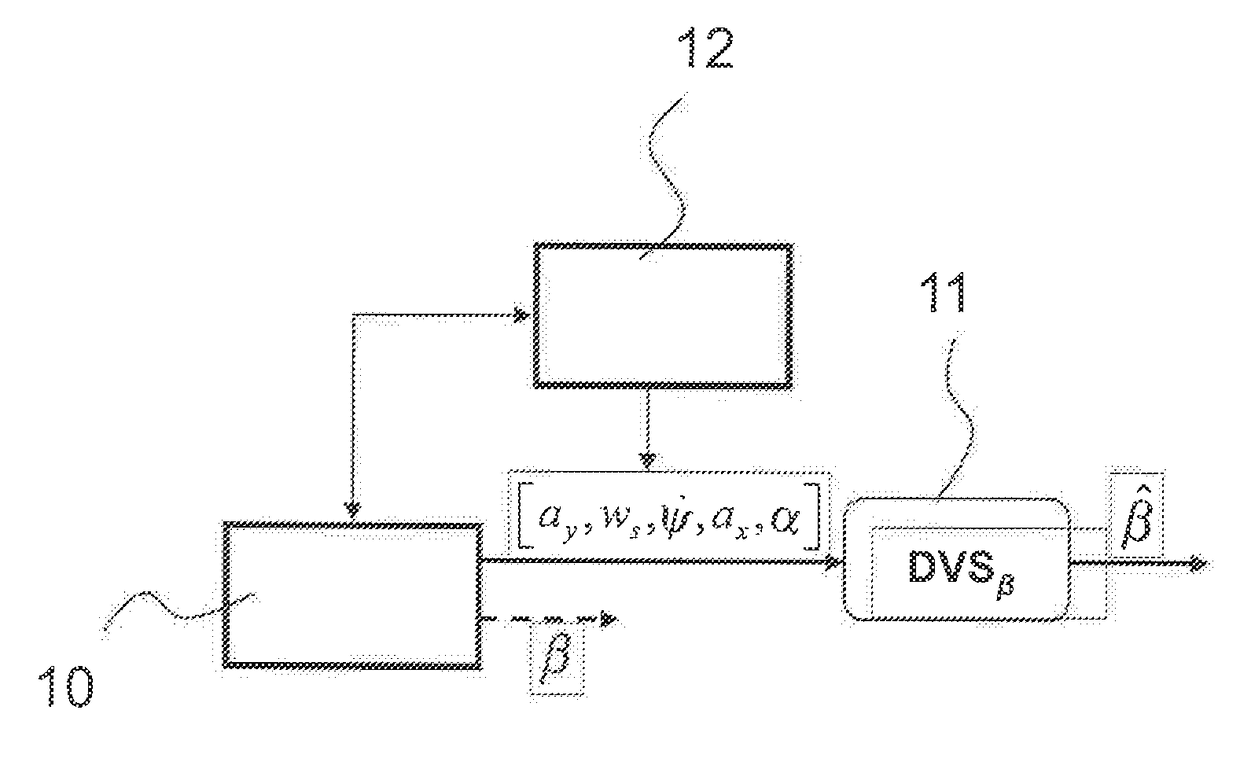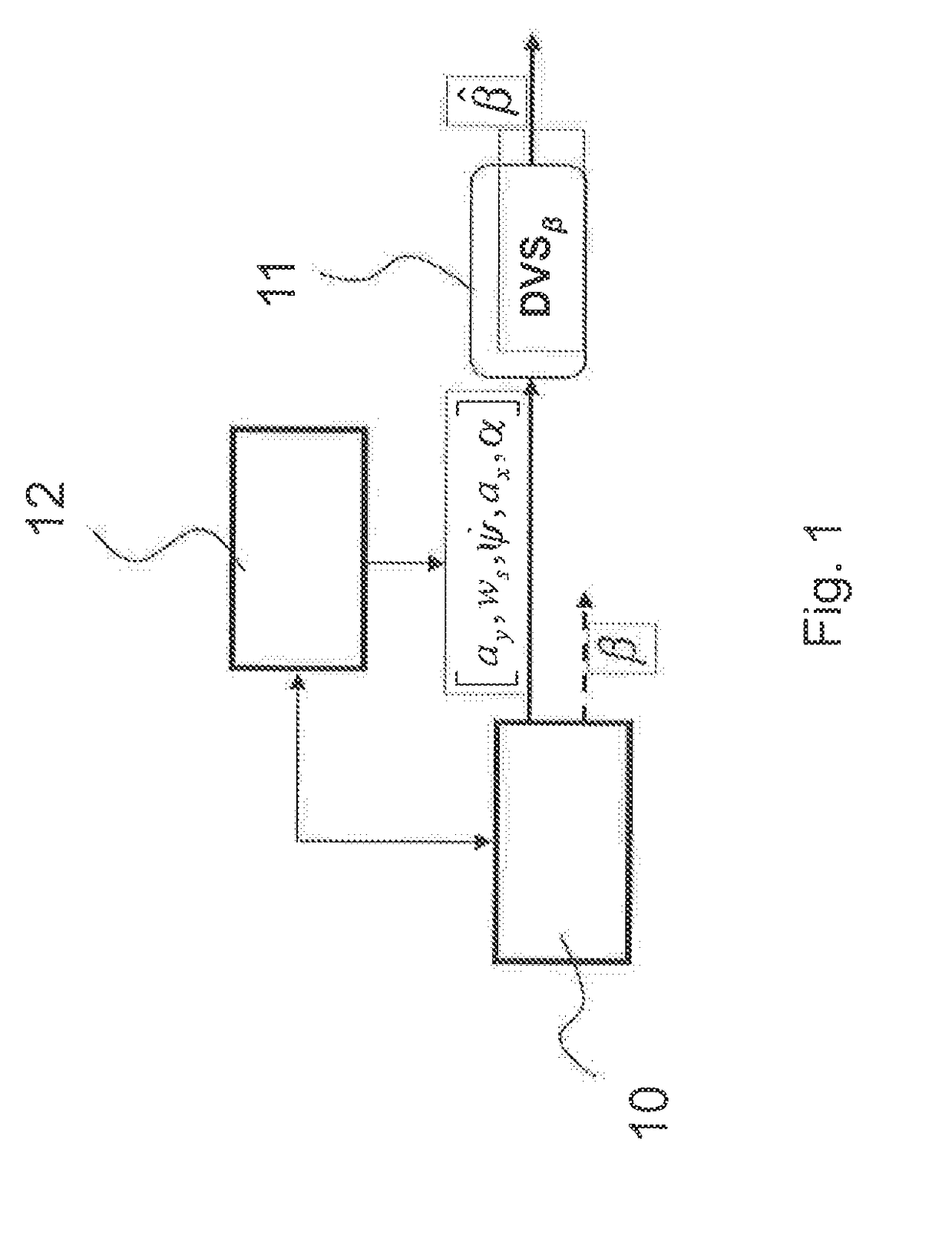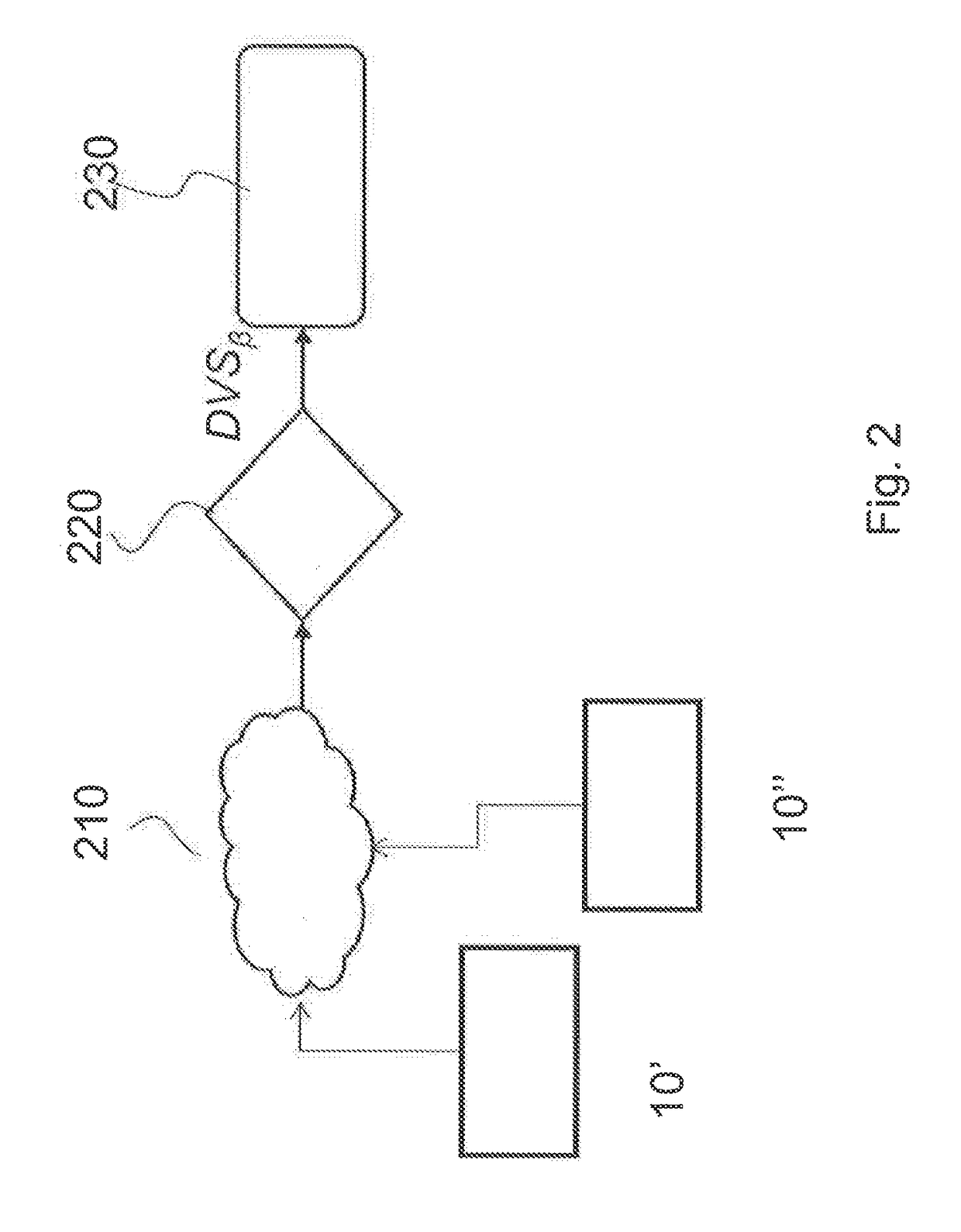Method for estimating variables affecting the vehicle dynamics and corresponding virtual sensor
a technology of virtual sensors and variables, applied in the direction of driving input parameters, control devices, transportation and packaging, etc., can solve the problems of inability to design estimation algorithms, difficult to achieve bounded estimation errors for complex systems, and severe drawbacks of two-step methods
- Summary
- Abstract
- Description
- Claims
- Application Information
AI Technical Summary
Benefits of technology
Problems solved by technology
Method used
Image
Examples
first embodiment
[0041]In the first embodiment, leading to a virtual sensor indicated as DVS0, the offline operation 220 is related to finding a regression function ƒβ* solution of the following optimization problem:
ƒβ*=arg mimaxt=m, . . . ,T|arctan(νy(t) / νx(t))−ƒ(rβ(t−1)| (3)
where the data contained in the reference data set Dd are used for computing the right end side of (3).
[0042] is a class of functions with given fading memory defined as:
ℱ=.{f:f(rβ(t)-f(r~β(t)≤γρkrβ(t-k)-r~β(t);∀t;k=1,…,m,∀rβ(t),r~β(t)}(4)
i.e. the functions ƒ of class respect the Lipschitz condition for each time t. The constant of the Lipschitz condition is a product of parameters γ, ρ to the k-th power, where 0≦yy, nw, nψ, nx, nα], i.e. the maximum interval among the different interval of measurement of the variables MQ.
[0043]Recalling that by definition the sideslip angle is β(t)=arctan(νy(t) / νx(t) and {circumflex over (β)}(t)=ƒβ(rβ(t−1)), see equation (2), it follows that the regression function ƒβ* solution of (3) is fou...
second embodiment
[0052]A second embodiment, leading to a virtual sensor of the vehicle sideslip angle, indicated as DVSβν, is based on the design of two virtual sensors of the longitudinal velocity νx and lateral velocity νy, indicated as DVSvx and DVSvy, respectively.
[0053]These two virtual sensors are designed by the offline operation 220, making use of reference data Dd, as follows:[0054]The virtual sensor DVSvx is obtained of the form:
νx*(t)=ƒx*(rx(t−1)) (7)
rx(t−1)=ws(t−1), . . . ,ws(t−nw−1),ax(t−1), . . . ,ax(t−nx−1),α(t−1), . . . ,α(t−nα−1)
[0055]rx is a vector composed by a subset of the measured variables MQ, i.e. the four wheels speed w, longitudinal acceleration ax, and steering angle α. In various embodiments other choices for the subset composing vector rx are possible.
[0056]ƒx*: is the solution of the optimization problem:
ƒx*=arg mimaxt=m, . . . ,T|νx(t)−ƒ(rx(t−1)| (8)
where the data contained in the reference data set Dd are used for computing the right end side of (8).
[0057]The ƒx* so...
third embodiment
[0072]the method, leading to the design of a virtual sensor of sideslip angle indicated as DVSβμ, envisage, at step 210, to operate a partition of the reference data set Dd in a number L of reference subsets Dd1, Dd2, . . . , DdL. Each one of said subsets identified by a determined operational condition of interest in said given set of operation conditions OC, contains data acquired for a same value (or values range) of such operational condition of interest. In the embodiment here described it is considered that the partition is performed according to the road-tire friction coefficients μ1, μ2, . . . , μL, which can be considered as the most relevant operational condition OC affecting vehicle dynamics. For the sake of exposition simplicity, partition in L=2 subsets is considered, but the method can be easily extended to larger values of L, as shown below. Assuming that in the reference data set Dd the data for t=1, . . . , M are acquired with friction coefficient μ≅μ1, and for t=M+...
PUM
 Login to View More
Login to View More Abstract
Description
Claims
Application Information
 Login to View More
Login to View More - R&D
- Intellectual Property
- Life Sciences
- Materials
- Tech Scout
- Unparalleled Data Quality
- Higher Quality Content
- 60% Fewer Hallucinations
Browse by: Latest US Patents, China's latest patents, Technical Efficacy Thesaurus, Application Domain, Technology Topic, Popular Technical Reports.
© 2025 PatSnap. All rights reserved.Legal|Privacy policy|Modern Slavery Act Transparency Statement|Sitemap|About US| Contact US: help@patsnap.com



